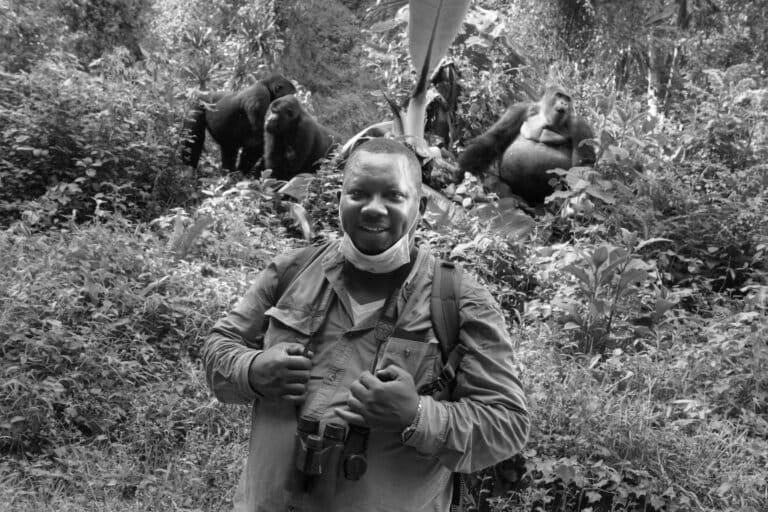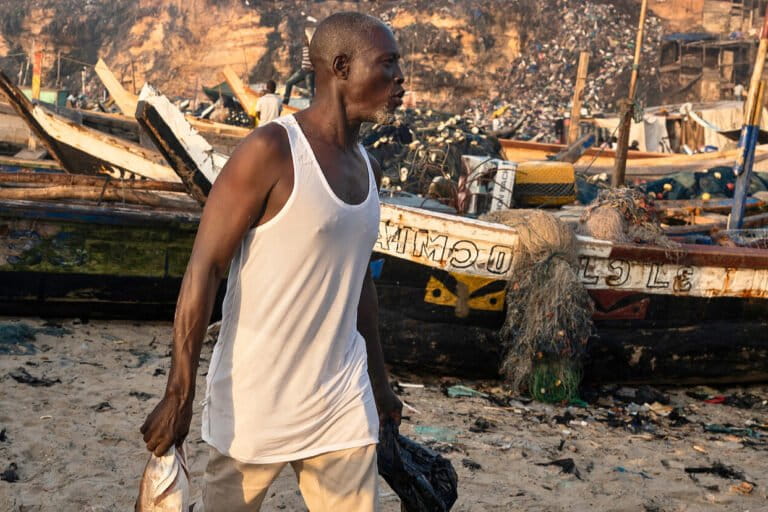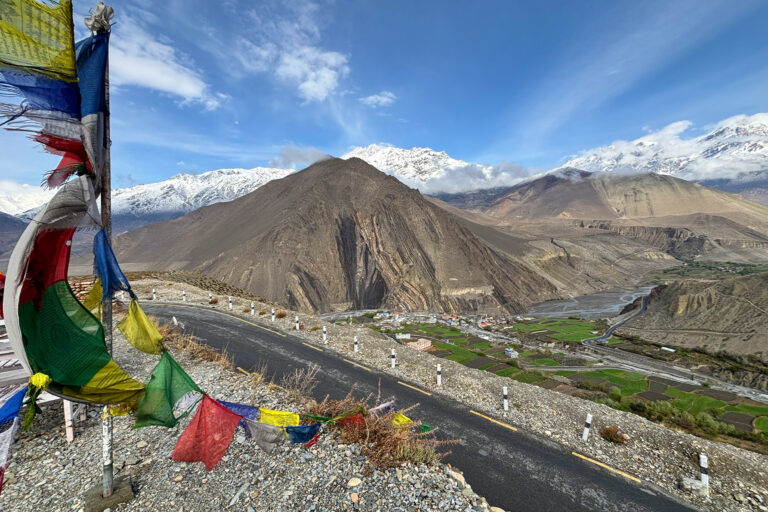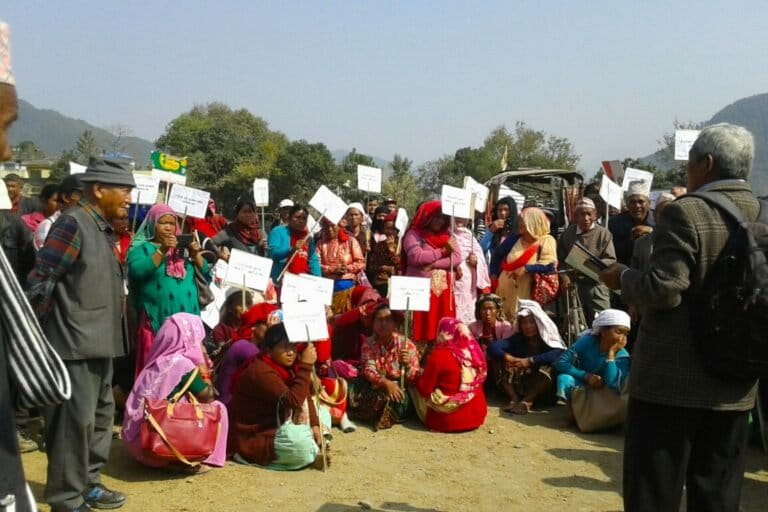- Gold mining has played a significant role in the colonization of the Mato Grosso region of Brazil, starting with the bandeirantes in the 18th century and reignited by the garimpeiros in the 1970s.
- The gold rush continued in the placer mining camps called garimpos across the region, extending to other states including Rondônia, Amazonas, Roraima and Amapá, and several Indigenous lands have been encroached upon.
- With increased political influence over decades, the gold mines continued to persistently invade Indigenous territories, notably the Yanomami and the Macuxi, while several rivers have been polluted by mercury and cyanide from the extractive industry.
Gold was central to the colonization of the Mato Grosso state area. The state’s current capital city, Cuiabá, was founded by bandeirantes, settlers in Portuguese Brazil from São Paulo, who discovered gold in the region in 1719. As they explored, they found gold in the upper reaches of the Rio Guaporé, which led to the creation of the first capital of Mato Grosso at Vila Bela da Santíssima Trindade in 1731.
The easily exploitable placer deposits were soon exhausted, but the thirst for gold was reignited during the 1970s when wildcat miners, garimpeiros, rushed to exploit a region with both alluvial and saprolite deposits at four major garimpos: Baixada Cuiabá, Serra de Aguapei, Novo Xavantina and Alta Floresta-Juruena.
The gold rush of the 1970s and 1980s attracted tens of thousands of garimpeiros into previously remote regions. There are no reliable estimates of the quantity of gold they extracted, but it is widely assumed the demographic surge, and the capital derived from gold, accelerated the development of the state’s agricultural economy. Many garimpeiros became small farmers and ranchers, particularly in northern municipalities where INCRA sponsored a half dozen settlement projects. As in Pará, they have retained both their knowledge and propensity to exploit alluvial gold, which has shown a resurgence of activity in the old garimpos located near Alta Floresta and Pontes de Lacerda.
In the Baixada Cuiabá, a dozen moderately large placer mines have transitioned into strip mining operations exploiting primary ore deposits that use cyanide to separate and concentrate elemental gold. There are three open-pit mines operating in the Aguapei belt near the Bolivian border, and one industrial-scale gold mine is under development in the Alta Floresta-Juruena belt. There will likely be more in the near future, as several companies hold exploration permits in the region. As in eastern Pará, many hope to exploit both copper and gold.

Rondônia and Amazonas
The geological formations that are the source of gold in northwest Mato Grosso extend into the border municipalities of Rondônia where several wildcat mines have encroached upon the Indigenous lands of the Cinta Larga (TI Roosevelt and TI Aripuanã). There were no mass gold rushes in this corner of the Amazon in the 1980s; however, the western portion of the state is riddled with hundreds of abandoned placer mines established in the 1960s and 1970s during the cassiterite boom. These abandoned mine sites are indistinguishable from placer gold mines; consequently, it is difficult to document the historical impact of small-scale gold miners.
The longest continuous garimpeiro district in Rondônia is the river channel of the Rio Madeira where placer dredges have exploited alluvial gold since the early 1980s. This unique ‘garimpo aquático’ is the consequence of the depositional forces of a massive sediment-laden ‘white water river’ and the extraordinary quantity of gold released by erosional processes unleashed during the Pleistocene that gave rise to the gold fields in the Madre de Dios and the La Paz Yungas. Prior to the construction of the dams at Santo Antonio and Jirau, dredges worked the river upstream from Porto Velho, producing an estimated 38.5 tons of gold between 1980 and 2010. This area is now essentially off limits, and the bulk of the dredge miners now operate downstream from Porto Velho.
The activities of placer dredges are most noticeable in Humaitá, which is the operating base for hundreds of these specialized river barges. Virtually all operate outside the law: neither paying royalties nor complying with environmental regulations. A series of police investigations in 2017 provoked a backlash from the garimpeiros, who burned the offices of IBAMA and ICMBio. This focused the attention of elected authorities on the demands of garimpeiro families who reside in more than 170 riverside villages. At the direction of the governor, the environmental authorities of Amazonas (SEMA – Amazonas) issued provisional licenses and the dredges proceeded to expand their operations all the way to the mouth of the river. By 2021, there were more than 400 barges operating in a series of ‘chains’ in the river channel in the municipality of Autazes. Another police action (Operação Uiara) confiscated and destroyed 130 barges in November of 2021. The garimpeiros responded by protesting to local authorities and their representatives in Congress and, once again, were allowed to regroup and return to the river.

In March 2022, the administration of Jair Bolsonaro launched a program specifically to support garimpeiros: the ‘Programa de Apoio ao Desenvolvimento da Mineração Artesanal e em Pequena Escala’ (PROMAPE). In a press release, the administration stated, “that artisanal and small-scale mining is a source of wealth and income for hundreds of thousands of people and it is essential that the government takes actions to recognize the conditions in which the small miner lives, the scope of its activity and the primary needs of the surrounding society.” By July 2022, there were dozens of barges once again exploiting the alluvial gold on the Rio Madeira with the public support of prominent politicians from all major parties.
Terrestrial garimpos are not common in Amazonas state because of its geological history. Nonetheless, there are a few active garimpos in border municipalities that share a geological province with an adjacent state or nation (Annex 5.1). The most prominent is the garimpo de Juma located near the village of Apuí, where a placer discovery triggered a gold rush in 2007. A relatively small deposit, it ceased activities following a police action in 2017 when SEMA-Amazonas intervened in an attempt to force the association of garimpeiros to comply with pertinent regulations.
Barge-mounted dredges have been reported on several rivers in the western sector of Amazonas state. Those located south of the Rio Solimões (Purus, Jurau and Javari) are unlikely to host a gold rush because neither drain an area with gold-bearing geological formations. In contrast, the Solimões, Japaru (Caquetá) and Putumayo all drain portions of the Andes with known or suspected deposits of gold; dredges have been reported on these rivers, but not at levels sufficient to qualify as a gold rush. The watershed of the upper Rio Negro drains landscapes known to hold significant gold reserves, particularly in Roriama and along the border with Colombia. Garimpeiros have yet to successfully install either a river-based or terrestrial garimpo in the mid to upper reaches of the Rio Negro, presumably because the local authorities are closely affiliated with Indigenous people.

The Calha Norte: Roraima and Amapá
Roraima has experienced periodic gold rushes over several decades, beginning in the 1970s after the discovery of gold in the borderlands between Venezuela, Guyana and Brazil. The military regime facilitated migration into the region as a deliberate strategy to occupy its northern frontier (Calha Norte) and thousands of garimpeiros streamed into the region. Unfortunately, the borderlands were the homelands of several Indigenous tribes, notably the Yanomami to the west and the Macuxi in the East. The Yanomami are uncontacted forest dwellers, while the Macuxi had limited experience interacting with the military and ranchers. Neither group was prepared for the onslaught of garimpeiros.
As the gold rush increased in intensity, its impact on Indigenous people was intensified by the actions of Romero Jucá, an influential politician who migrated to Roraima as a young and ambitious public servant. He was appointed head of FUNAI in 1986 where he sought to dismember and reduce the extent of the Yanomami territory. In 1989, he was appointed as the first governor of the new state and adopted policies to facilitate the migration of thousands of garimpeiros into the borderlands. As in the Tapajós, the miners organized a logistical system that used light aircraft to supply their operations at more than eighty remote airstrips spanning more than eight million hectares.
The Yanomami resisted but the interlopers responded with brutal force and in one instance killed sixteen men, women and children in a massacre that was ruled an act of genocide. Juca lost his election for governor in 1990 and new leadership at FUNAI reconstituted the TI Yanomami to its original 9.6 million hectares.
Shortly thereafter, a law-and-order campaign physically removed ~5,000 garimpeiros from Yanomami territories. Known as Operação Selva Libre, the police action was organized by FUNAI in coordination with the public prosecutor (MPF) and specialized units of the army and federal police. Similar operations were conducted in 1997, 1998 and 1999 and periodically throughout the next decade. Despite these efforts, garimpeiros continue to invade the TI Yanomami, mostly on four tributaries to the Rio Branco (Uraricoera, Mucajaí, Apiaú and Catrimani) whose lower reaches are easily accessible by road from the populated areas of Roraima.
The Roraima gold fields are different from the garimpos in Tapajós, eastern Pará and Mato Grosso where placer mining left conspicuous scars on landscapes, visible on satellite images decades after they were created. It is unclear why this is the case. Perhaps they are exploiting hard-rock deposits with localized veins or are working very small placer deposits under the forest canopy. The inability to monitor their illegal activities using remote sensing technology requires a more intensive on-site monitoring effort that is both dangerous and more costly. The availability of high-resolution imagery will greatly facilitate monitoring efforts. The inability to monitor the region effectively facilitated a renewed garimpeiro invasion during then Bolsonaro administration defunded efforts to control illegal mines and support the health and well-being of the Yanomami Indigenous communities.

Gold mining in Amapá dates from the last half of the 19th century with a gold rush in what are now the northern municipalities of Oiapoque and Calçoene. Garimpeiros were attracted by the rich gold deposits associated with the greenbelt formation that extends across the hills of the Guiana Coast. They have had a continuous presence at the Garimpo São Lourenço, which was also the site of the state’s first underground gold mine (Salamagnone), which extracted ~20 tons of gold (~US$250 million) between 1984 and 1995.
The next major development was an open-pit mine at Gaivota in 1991, although that company lost (part) of its investment when the concession was overrun by garimpeiros in 1997. The next corporate endeavor was at the Tucano mine, which benefited from the extensive geological explorations of its neighbor, the Serra de Navio manganese mine. The Tucano facility has opened eight open-pits and one underground mine since 2012. As of 2021, it had produced more than 44 tons of gold with a nominal value of ~US$2.5 billion.
Situated just east of these two industrial mines is the RENCA mineral reserve, which is believed to have one or more world-class deposits of gold, copper and other strategic minerals. The RENCA is closed to mining, but garimpeiros have been exploiting surface deposits at several localities, most notably in the Serra de Ipatinga, a low ridge located to the west of the Rio Jari in Northern Pará. Estimated at ~5,000, they are operating between thirty and forty clandestine landing strips.

Belo Sun and the Volte Grande
The most controversial corporate project in the Brazilian Amazon is located near the Volte Grande on the Xingu River just a few kilometers from the Belo Monte hydropower dam. The proposed mine would exploit a world-class gold deposit on a greenstone deposit that was first exploited by garimpeiros in the 1960s (Garimpo Itatá). The project developer, the Canadian company Belo Sun, acquired the concession in 2013. The proposed open-pit mine has ‘proven or probable’ reserves of 3.8 million ounces of gold and is projected to generate profits of US$2 to US$5 billion over a seventeen-year lifetime. Opposition to the project has focused on the danger of a catastrophic failure of its cyanide ponds and tailing storage facilities that would contaminate the lower stretches of the Rio Xingu. Concern over the potential impact is magnified by the reduced water flows caused by the Pimentel Dam which diverts about 75 per cent of the river’s water flow to the Belo Monte hydropower plant.
Opposition to the mine is led by Indigenous communities whose livelihoods depend on the natural fishery of the Xingu River. The environmental impact analysis (EIA) was accepted by the state environmental agency (SEMAS) but the operating license was rejected by a federal court due to the failure of the company to obtain the free prior and informed consent of nearby Indigenous communities. The company contends it has reached an agreement with the communities, a position validated by the functionaries at FUNAI during the Bolsonaro administration and the state Supreme Court. Nonetheless, the project remains on hold until the resolution of a separate judicial case questioning the licensing process, arguing that the federal agency (IBAMA) has jurisdiction rather than the state agency (SEMAS). If it is allowed to move forward, Belo Sun will be the largest gold mine in Brazil.
Banner image: The frenzy for gold led to the proliferation of placer dredges that organised themselves into formal and informal cooperatives that worked the Rio Madeira between Porto Velho and the main stem of the Amazon River. Image © Bruno Kelly/Greenpeace.
“A Perfect Storm in the Amazon” is a book by Timothy Killeen and contains the author’s viewpoints and analysis. The second edition was published by The White Horse in 2021, under the terms of a Creative Commons license (CC BY 4.0).
To read earlier chapters of the book, find Chapter One here, Chapter Two here, Chapter Three here and Chapter Four here.

Chapter 5. Mineral commodities: a small footprint, a large impact and a great deal of money
- Mineral commodities: the wealth that generates most impacts in the Pan Amazon | Introduction March 21st, 2024
- The environmental and social liabilities of the extractive sector March 26th, 2024
- Mining in the Pan Amazon in pursuit of the world’s most precious metal April 4th, 2024
- Illegal mining in the Pan Amazon: an ecological disaster for floodplains and local communities April, 9th
- The environmental mismanagement of enduring oil industry impacts in the Pan Amazon April, 17th
- Outdated infrastructure and oil spills: the cases of Colombia, Peru and Ecuador April, 25th
- State management and regulation of extractive industries in the Pan Amazon May 2nd, 2024
- Is the extractive sector really favorable for the Pan Amazon’s economy? May 8th, 2024
- Extractive industries look at degraded land to avoid further deforestation in the Pan Amazon May 15th, 2024
- Global markets and their effects on resource exploitation in the Pan Amazon May 21st, 2024
- Sustainability in the extractive industries is a paradox May 29th, 2024
- In the Pan Amazon, environmental liabilities of old mining have become economic liabilities June 5th, 2024
- Solutions to avoid loss of environmental, social and governance investment June 12th, 2024
- The most prominent mining companies in the Pan Amazon – a review June 21st, 2024
- Mineral hotspots in the Pan Amazon June 27th, 2024
- Brasil, Venezuela and Peru: the geography of industrial metals July 5th, 2024
- Industrial minerals in the Pan Amazon July 12th, 2024
- Minerals for agricultural use can already be found in Amazonia July 19th, 2024














